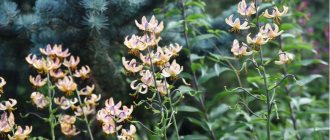When taking a walk along the shore of a lake or river, you can often see pure white flowers surrounded by large leaves that look like green plates. It seems that these flowers seem to float on the surface of the reservoir. These beautiful flowers are called water lilies, or, as they are otherwise called, nymphs. Although these names are not so common among conversations, you can often hear another name - water or water lily. But the water lily is most often the name given to a simple water lily, which is very often found in the reservoirs of our country. Let's take a closer look at this beautiful and delicate flower.
Snow-white water lily
The snow-white water lily (Nymphaea candida) got its name due to the lighter color of its petals compared to the previous species.
Other differences: the base of the calyx is not round, but almost quadrangular, as well as a low stigma of orange color.
The diameter of the flowers is about 15 cm. The snow-white water lily blooms at the end of May.
Ponds and shallow lakes where the snow-white water lily grows are located in the European part of Russia, Western and Eastern Siberia, Central Asia and Kazakhstan.
Egyptian water lily
The Egyptian lotus (Nymphaea lotus) with its flowers resembles a white water lily. This plant is native to North Africa. It was with them that the tombs of the Egyptian pharaohs were decorated.
Today this water lily can be found in water bodies of Asia, North and South America.
Through the work of breeders, many varieties and hybrids of water lilies have been developed, from dwarf to large-flowered ones, with a wide variety of petal colors. That's why gardeners and landscape designers love them so much.
Planting lilies and replanting them
It is best to purchase and plant water lilies in early May and before the end of June. Plants can be planted in the ground immediately, but it is better to initially plant it in a plastic container with a volume of about 5 liters.
- For planting, it is good to use a 2-3 cm layer of peat, placing it at the bottom of the vessel.
- Next, use a mixture of compost, garden soil, and sand in equal proportions. After planting a water lily, you should not bury the growth bud.
- Afterwards the soil is compacted and covered with pebbles so that the plant does not float up.
- Then the vessel is carefully placed in the pond. The appropriate depth depends on the plant variety. For dwarfs it is 15-20 cm, for tall ones it is 70-100 cm from the surface to the growth bud.
- In the spring, to speed up the development of plants, it is better to place the container with the lily in shallow water, while the leaves have not yet formed. After they grow back, it is necessary to carry out deeper placement. Plants that are planted early may have time to take root and bloom in the first year.
Pond for the garden (video)
Water lily for a pond: species diversity
Size
In the case of water lily breeding, this parameter becomes the leading one. Today, plant breeders have bred the plant in hundreds of variations. The main classification comes down to the size range:
- dwarf;
- small;
- average;
- large.
Caring for flowers and their reproduction capabilities may be similar, but planting will have a guaranteed individual method.
Dwarf nymphs with a circumference of 30–60 centimeters and a flower diameter ranging from 5–10 cm, are planted under water no deeper than 10–15 cm.
Dwarf nymph
Small water lilies, characterized by 10 - 15 centimeter flower cups and a total spreading of 60 to 120 cm, are buried 15 - 50 cm.
Small water lilies
Medium-sized plants, such as the snow-white water lily, occupy from one hundred twenty centimeters to one and a half meters of water surface and bloom with 15-18 centimeter flowers. They require a depth of 40-60 cm.
Medium-sized water lilies
The largest water lilies, with luxurious flowers up to 25 centimeters in diameter, spread out over 1.5 or even 2.5 meters on the water surface. Their habitat is reservoirs with a depth of at least half a meter. Planting them will be complicated by deep work, but the result will exceed expectations.
Large water lilies
Knowing this classification, you can easily select an assortment of ornamental plants for your country pond. If you don’t already have one, then first you need to figure out what type of water lilies you would like to grow, and prepare a foundation pit based on this.
Remember, you can only plant whatever your heart desires in a large body of water. Miniature varieties will also feel wonderful:
- in a shallow pond,
- tubs,
- barrel
Small water lilies can be planted in a barrel
Usage
Water lilies do not bring any benefit and provide only aesthetic pleasure. Decorative ponds have long become the norm, since you can build one at home without any problems. Among the plants that people grow in their home ponds, without a doubt, the leading place is occupied by the water lily. It reduces the growth of algae and prevents the water from blooming.
Varieties are usually planted at a certain depth:
- Small ones, the diameter of which is 6-15 centimeters, are planted at a depth of ten to fifty centimeters;
- Medium, which do not exceed 15-18 cm in size and sit at a depth of 30-65 centimeters;
- Large ones, in which the flower can reach 30 centimeters in diameter, and the depth where they are planted is 100 centimeters.
Experts very often recommend leaving more than half of the water mirror free in order to emphasize all the magic of water nymphs. But they do not need to be planted in large quantities; 5-6 pieces per small pond are enough. They grow at a rapid rate, but flowering, regardless of the speed of development, becomes rare each time. All the work will be covered with leaves, and this is not particularly beautiful, because fish or other small animals can live in a decorative pond.
Multi-colored lilies should not be mixed together, because due to the difference in size and shades, a beautiful look turns into a colorful mush, and this already spoils the entire decoration that you worked so hard on. But, if you still decide to plant several types of water lilies in one place, you must remember to separate them by color so that everything does not turn into mush.
How to plant a water lily
You should not try to dig up a water lily from a forest pond; it is unlikely to take root in an artificial reservoir. It is better to buy a hybrid seedling adapted for planting in your region: frost-resistant or drought-resistant.
The main thing is that your pond is illuminated by the sun, and the rules for planting water lilies are very simple:
- as practice shows, it is better to root the first plant not in the bottom soil, but in a wide, shallow container, for example a 5-7 liter plastic basin;
- We lay a 2-3 cm layer of peat on the bottom, on top there is a special substrate for aquatic plants or a mixture of compost, sand and garden soil in equal proportions;
- We place fertilizer under the roots of the seedling, for example a mixture of clay and meat and bone meal;
- we plant a water lily, leaving a growth point (bud) on the surface;
- To prevent the soil from being washed away, sprinkle it with a layer of pebbles.
Now we lower the basin into shallow water, and when leaf plates appear on the surface, we move the container to the depth recommended for this variety. If the pond does not freeze, the water lily overwinters in the pond. Otherwise, the basin is transferred to the cellar until spring.
A properly planted plant blooms in the first year. For propagation, you can use a piece of rhizome with a bud or seeds. When several plants appear, a pond with water lilies will look very impressive.
Care
In order for water lilies to germinate well and live for a long time, you need to remember some key rules for caring for them:
- Lighting. The reservoir should not be protected from sunlight; it should be exposed to natural color for at least several hours a day, which cannot be replaced by artificial color.
- Landing. In the case where the decorative pond is small in size, it is best to place the nymphs in an ordinary flower pot, basket or other container, and then lower it to the bottom. The smaller the size of the reservoir, the more frequent cleaning it needs. That is why the best solution would be a pot, because you can simply take it out, and then drain the water from the hole and replace it, unlike full-fledged growing plants, which not everyone can clean up.
- Fertilizer. In general, plants that grow on water do not require care. They have enough microorganisms and decomposed microelements living inside the reservoir. And special fertilizers are used only in extreme cases, or when transplanting a nymph, so as not to injure it.
- The soil. The more nutrients the soil stores, the faster the plants will grow and the better flowering the owner will expect. The main criterion for assessing soil is viscosity: clay mixed with garden soil in a ratio of 1:3, according to many, is the best solution for a small decorative pond.
Caring for water lilies during wintering
The most difficult thing about growing water lilies is preserving them for the winter. In each case the approach is individual. The plant can be left in place over the winter if it is located at a depth of 0.5 meters or more. In this case, the reservoir must be large and not freeze. If this is not the case, then it is better to remove the containers with water lilies and place them in a dark, cool place. You can read the material about fish for the pond.
Water lilies leave their sleep in the spring, after the water warms up. It is at this time that you need to return the plant to its place. If there is little melt water in the reservoir, then it is worth adding tap water. After a while, the water may turn cloudy green. Don't worry and change it, everything will be back to normal in a week.
For frost-resistant species, spring frosts will no longer be scary.
How to propagate water lilies?
Water lilies most often reproduce using cuttings of rhizomes. Usually the rhizomes are highly branched and have dormant buds. To propagate a plant, you need a piece of root with a bud. The cut is sprinkled with ash or crushed charcoal. The division process should not be drawn out too much, since the leaves and roots do not like drying out. The material about an aqua flower bed for a pond will also be interesting.
Diseases and pests of water lilies
Nymph disease or insect attack is rare. But sometimes summer residents are faced with the appearance of fungal infections, rot and pests:
| Problem | Remedy |
| Aphid | Wash off colonies mechanically |
| Pitcher leaf beetle, marsh moth | Collect individuals by hand, cut out damaged leaves |
| Leaf spot, powdery mildew | Leaves covered with black round spots should be cut out. Treat affected plants with antifungal drugs |
The most dangerous disease for nymphs is black rot. It starts from the root system and affects the entire plant. The main signs of infection: blackening of the roots, yellowing leaves, unpleasant odor. An infected specimen can only be saved with a medicinal bath:
- Remove the container with the nymph from the pond and place it in a fungicidal solution.
- When the exposure time of the drug is over, replace the solution with clean water.
- Keep the water lily in quarantine for 20-30 days.
If during this time the signs of black rot disappear and the plant begins to recover, it can be returned to the pond. Otherwise, the sick nymph will have to be destroyed.
Growing different varieties of water lilies in a pond: photos, videos
A home pond is the best decoration for a summer cottage or garden. And various plants decorate the pond itself. The most common flowering plants in the pond were water lilies (nymphs) or water lilies. They are easy to care for and will delight the eyes of owners and their guests all summer long.
These flowers can be grown from shoots or from seeds. The first option is suitable for those who want to see the blooming buds as soon as possible. The second option requires patience. And if you are patient and caring for a plant brings you pleasure, then this article is for you.
Reproduction
The reproduction process occurs thanks to rhizomes and seeds. Even with a strong drop in water level, it will bloom and bear fruit. There are several conditions for a water lily to live:
- Bright places.
- Fresh water.
- Silty soil.
- When in water, it will easily overwinter and survive other weather disasters.
Reproduction of water lilies is possible by divisions, rhizomes, and seeds
Note! White water lily is grown in artificial ponds for use in the production of medicines. It is also a valuable ornamental plant.
Giant water lily in an artificial pond
Growing
It is possible to grow a water lily in artificial conditions, but it is not easy. Experts in landscape design of underwater gardens share tips:
- The water lily has a pronounced dormant period - winter.
- Transplantation and planting can be carried out from May to October.
- Lilies should be placed on an area of 0.5 to 4 square meters. m depending on age and size.
- In order to contain entire collections, you need a large reservoir. Optimal conditions are a 60% free reservoir.
- If the pond is not drained for the winter, you can plant the water lily directly in the ground.
- If drained reservoirs are used for cultivation, then the plant must be placed in containers with holes for drainage.
- The substrate is silt, which is taken from the bottom of the river. If this cannot be done, then use compost and garden soil with sand.
Preparing the plant for wintering
The water lily cannot overwinter in shallow reservoirs outside; this is true for all cases when freezing reaches the bottom.
Let's figure out a little how to prepare a nymph for winter. The best place for wintering may be the basement. Storing nymphs in the basement: simply take out the container in which the rhizomes are located and transfer it to the basement or other dark, cool place, but inaccessible to frost. If you are sure that your pond will not freeze to the bottom, then the water lilies can be left to overwinter in place. This applies to reservoirs with a depth of 0.5 m.
As you understand, water lilies are quite easy to grow at home. Create favorable conditions for them and admire the beautiful flowers.
Bloom
Some water lilies bloom early, already in May-June, and many varieties delight with their beauty until the first frost.
The water lily flower, as if floating in water, really resembles a lily in its shape. The diameter of the inflorescence is from 5 to 20 cm. The shade of the petals can be white, snow-white, pink, lilac, red, violet or cream. In the center, the carpels are clearly visible, forming a pistil with a stigma.
The sepals hold the petals and are invisible to the eye. They form a cup, which can be round or quadrangular. There can be from 3 to 5 sepals.
After sunset, the petals of the water lily close and hide under the water, and at dawn they bloom again. One flower lives for about 3-4 days, but thanks to the abundance of buds on the stem, the flowering is quickly renewed. Water lilies smell nice. The aroma of some is barely noticeable, while others are more pronounced.
Now you know what a water lily looks like. Compare it with the egg capsule in the photo below and do not confuse it.
Let's take a closer look at the most famous of the 44 types of water lilies.
Legendary plant
The white water lily from the Red Book is truly fabulous, it’s not for nothing that there are many myths and legends about it. In the history of many nations, it is called a talisman that can help against illness, the evil eye, conspiracy, and various evil spirits.
The water lily perfectly purifies water and does not allow the reservoir to overheat
Note! In numerous rituals using the plant, it is not the charming flower that is involved, but the rhizome.
Snow-white water lilies - decoration of rivers and ponds
According to an old belief, a traveler who takes the root of this plant with him on the road will be protected from all diseases and evil spirits that may overtake him along the way. Another name is overcoming grass, that is, grass that can overcome everything.
There are tropical and winter-hardy types of water lily
For the ancient Greeks, the water lily was a symbol of beauty and chastity; a wreath of water lily flowers was woven for girls who were getting married. If we turn to Latin, the name of the water lily is nymph, that is, a semi-deity who is part of nature.
Nymphea is a completely unpretentious plant, and growing it in artificial reservoirs will not be difficult
Weather by water lily
The water lily accurately predicts the weather! Main signs:
- If in the middle of the day the flower is completely or partially closed, you should wait for rain.
- If by 9 o'clock in the morning the flower has not yet bloomed, then by lunchtime it will rain.
- If the bud opens at 7-8 and closes at 17-18, then you should wait for clear weather.
- When the lily has not risen from under the water at all, it is better to hurry home, as a long and cold downpour is coming.
- If in the middle of the day the flower closes and hides under the water, expect bad weather.
- When the leaves have completely covered the surface of the reservoir, frosts can no longer be expected.
1
5
Myth of Nymphea
This legend tells of a young girl who one day got lost in the forest. In her wanderings, she came across a forest lake, which was so beautiful that the girl wanted to stay there forever. She was tired from her journey and fell asleep on the shore. The gods liked this beauty and turned her into a lake nymph. The nymphea fell asleep at the bottom of the lake every night, and at dawn she rose and washed herself in the first rays of the sun. She lured men to her who were drowning in deep but beautiful waters.
There are about 50 types of water lilies and a large number of decorative varieties
And one day a very handsome young guy came to the shore of the lake and the nymph fell in love with him. But he did not succumb to her charms and did not go to the bottom. She waited a long time for her beloved, and it was this wonderful feeling that turned her into a beautiful white water lily, the flower of which can be seen in the photo.
The variety of colors, shapes and sizes makes this plant very desirable for growing at home.
Other memories of the plant
The white lily is often remembered not only in myths and legends, but also in poems and songs. It is with it that the beauty of the water surface is associated. Anyone who has ever seen this plant on the surface of water will certainly understand the admiration for its beauty.
"Victoria Amazonica" surprises with its shape and large beautiful inflorescence
Rules for planting nymphs
You can purchase a nymphaeum seedling at a garden center or online store. When you decide to grow a water lily, you need to remember the basic rules for planting it.
Best time to plant
Leaf spotting is caused by a fungus.
When purchasing a seedling, you should pay attention to the absence of signs of disease and rot. The nymph should be planted immediately, without waiting for the soil in the container to dry. The optimal time for planting is May or June.
Place in the pond and water
Water lilies love sunlight and refuse to bloom in low light, so the plants should be placed in an open space. During the midday hours, partial shade from closely growing trees and shrubs is allowed. For normal development, the nymph must see the sun for at least 5-6 hours every day.
The chemical composition and acidity of the water do not play a special role - the water lily will feel great both in a silted pond and in a tub of tap water. Pools with fountains are not suitable for growing water lilies: splashes of water that constantly fall on the leaves will interfere with air exchange and cause rotting and death of the plant.
Choosing a pot and soil
The rhizomes of water lilies grow not in height, but in width, so for planting you need to choose wide containers made of materials that do not rot or oxidize under the influence of water. The best option is pots, containers, baskets made of plastic or stainless metal. Containers with a height of 15-25 cm are best suited; the diameter can be any (within reasonable limits).
To grow nymphs, experts advise using not mesh baskets, but basins and boxes without holes. A closed container will prevent the leaching of nutrients from the soil and prolong the growing season of plants. There is no need to be afraid that the substrate and rhizome will “suffocate” in a solid container. The main root of the flower is located on the surface of the soil, so its rotting is excluded.
When preparing a substrate for water lilies, it is recommended to use garden soil enriched with humus or rotted manure at the rate of 100-300 g per 10 liters of soil. You can add river sand, clay and peat, but not more than 1/3 of the total volume of the mixture. For active growth and abundant flowering, experienced nymph growers advise placing any long-acting mineral fertilizer on the bottom of the container:
- Ava;
- Apion;
- Basacote;
- Osmocote;
- Fertika station wagon;
- Plantella.
To prevent nutritional supplements from being washed away by water, it is better to roll them into clay balls or wrap them in thick paper.
Landing algorithm
Planting a nymph.
Even a novice summer resident can cope with planting a nymph:
- Fill the plastic container with soil so that 3-4 cm remains from the surface of the substrate to the edge of the container.
- Make a depression in the center, place the main root of the nymphea in it and sprinkle with soil.
- Cover the surface of the substrate with a layer of pebbles, river sand or clay. In reservoirs inhabited by fish or amphibians, it is preferable to use pebbles, gravel or granite crushed stone. After all the manipulations, the growth point (the place from which young shoots appear) should remain above the soil surface. If you bury it, the water lily will die over time.
- Place the pots at a depth of 10-20 cm from the growth point, and then gradually move to the desired depth.
To fulfill the conditions of the last paragraph, you can act in two ways. In the first case, when regulation of the filling of the reservoir is impossible, you will have to make a stand for the container from available materials - ceramic bricks or large stones. In pools and tanks, where the height of the water layer can be easily adjusted, you need to increase the water level by a few centimeters every day.
In deep reservoirs (≥ 1 m), where in winter the water does not freeze to the very bottom, the nymph can be planted in the bottom soil and secured - press the root with a stone or secure with wire staples.











